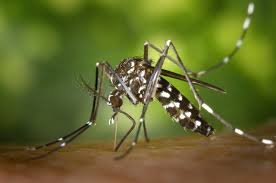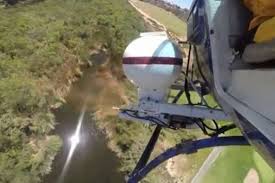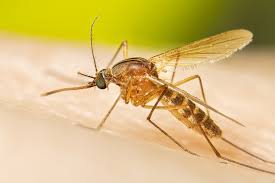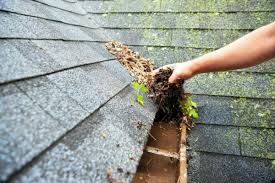Aerial larvicide drops can save many people from fatal diseases. That is why controlling the bites is important. As the temperatures rise, San Diego County is now preparing to prevent the overwhelming growth in mosquito populations. The county plans to prevent mosquitoes from spreading the disease and breeding even more. It will drop its very first aerial larvicide via helicopters.

The Drops
Usually, larvicide drops are set to happen every month, from April to October. The helicopter will drop the larvicide over 52 local waterways. This 1,400-acre area is a favorite breeding spot for mosquitoes. The larvicide will not affect pets and people. Its goal is to kill mosquito larvae in the target areas. That way, they will not develop into adult biting mosquitoes anymore.
The helicopters will be dropping granular and solid larvicide on almost inaccessible bodies of standing water in different types of waterways. These areas are ideal for mosquitoes to breed.

San Diego county has experienced a mild case of the West Nile Virus. Since 2017, up to three people have tested positive for this disease annually. Spraying the mentioned areas is ideal in keeping these numbers down.
The larvicide drops are part of the Integrated Vector Management Strategy. The county’s Vector Control project keeps an eye on about 1,600 possible mosquito breeding areas every year. Different larvicide applications are available—hand-crews, trucks, boats, and, of course, aerial drops. Vector Control also gives out mosquito-eating fish to the public for free. It also finds and treats unkempt swimming pools and tests dead birds for the presence of West Nile Virus. At the same time, it monitors mosquito populations that have the potential to transmit mosquito-borne diseases.

The Problem
Research shows that many Aedes mosquitoes are already settled in San Diego County. This presence needs more public effort to prevent these insects from spreading. Some of these mosquitoes can also transmit chikungunya, Zika, and dengue as well. Yards and spaces inside homes are ideal breeding areas for Aedes mosquitoes.

What the Public Can Do
People can build a daily clean-up routine in and around their homes. Pour out standing water and invert unused vessels in your yard. These vessels include old buckets, wheelbarrows, and plant saucers. Remember to clean out your gutters. That way, they won’t clog up and collect water. Do this more often if it always rains.
Clear the yard of dried leaves. These leaves tend to gather and form small vessels for water to accumulate. Remember, even the tiniest form of standing water can serve as an ideal breeding area for mosquitoes.

Get mosquito fish if you have unmaintained pools, troughs, or ponds. The Vector Control Program gives them for free. Place them in your ponds or fountains so that they can eat the larvae. Protecting yourself from mosquito bites can lower your risk of contracting mosquito-borne diseases. Wear long-sleeved tops and pants. Apply mosquito repellent and see to it that the screens on your windows. Turning on the air conditioning unit can also prevent bites. Report dead birds and an increase in mosquito presence. The common carriers are owls, crows, hawks, ravens, and jays.

Aerial larvicide can target and kill the mosquito larvae developing silently in secluded areas of many bodies of water. It is a good way to control mosquito populations and mosquito-borne diseases. Once the pilots know where to dump the larvicide, the process of killing off the larvae will begin. Of course, you must also do your part to keep your environment safe by cleaning in and around your home. Protecting yourself from bites is also an effective way to keep the cases of mosquito-borne diseases down.